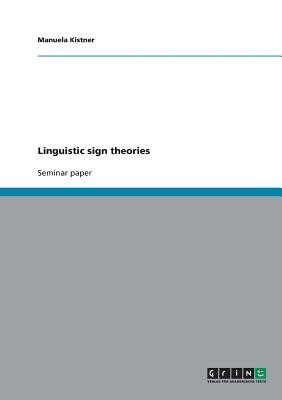
- We will send in 10–14 business days.
- Author: Manuela Kistner
- Publisher: GRIN Verlag
- ISBN-10: 3638948587
- ISBN-13: 9783638948586
- Format: 14.8 x 21 x 0.3 cm, minkšti viršeliai
- Language: English
- SAVE -10% with code: EXTRA
Reviews
Description
Seminar paper from the year 2005 in the subject English Language and Literature Studies - Linguistics, University of Heidelberg, language: English, abstract: We seem to be a species that is driven by "a desire to make meanings" (Chandler: 1995) by creating and interpreting signs. Indeed, it is a fact that "we think only in signs" (Peirce: 1931-58, II.302). These signs can have the shape of sounds, images, objects, acts or flavours. Since these things do not have an intrinsic meaning, we have to give them a meaning so that they can become signs. Peirce states that "Nothing is a sign unless it is interpreted as a sign" (Peirce: 1931-58, II.172). This means that everything can become a sign as long as it 'signifies' something - refers to or stands for "something other than itself" (Chandler: 1995). Our interpretation of signs is an unconscious process in our minds as we constantly relate the signs we experience to a system of conventions that is familiar to us. This system of conventions and the use of signs in general is what semiotics is about. There are three major models that give a detailed explanation of the constitution of a sign; these are the models of Ferdinand de Saussure's, Charles Sanders Peirce's and Karl Bühler's model. At first, they will be presented in detail and secondly, there will be a brief discussion about them.
EXTRA 10 % discount with code: EXTRA
The promotion ends in 23d.20:49:47
The discount code is valid when purchasing from 10 €. Discounts do not stack.
- Author: Manuela Kistner
- Publisher: GRIN Verlag
- ISBN-10: 3638948587
- ISBN-13: 9783638948586
- Format: 14.8 x 21 x 0.3 cm, minkšti viršeliai
- Language: English English
Seminar paper from the year 2005 in the subject English Language and Literature Studies - Linguistics, University of Heidelberg, language: English, abstract: We seem to be a species that is driven by "a desire to make meanings" (Chandler: 1995) by creating and interpreting signs. Indeed, it is a fact that "we think only in signs" (Peirce: 1931-58, II.302). These signs can have the shape of sounds, images, objects, acts or flavours. Since these things do not have an intrinsic meaning, we have to give them a meaning so that they can become signs. Peirce states that "Nothing is a sign unless it is interpreted as a sign" (Peirce: 1931-58, II.172). This means that everything can become a sign as long as it 'signifies' something - refers to or stands for "something other than itself" (Chandler: 1995). Our interpretation of signs is an unconscious process in our minds as we constantly relate the signs we experience to a system of conventions that is familiar to us. This system of conventions and the use of signs in general is what semiotics is about. There are three major models that give a detailed explanation of the constitution of a sign; these are the models of Ferdinand de Saussure's, Charles Sanders Peirce's and Karl Bühler's model. At first, they will be presented in detail and secondly, there will be a brief discussion about them.


Reviews